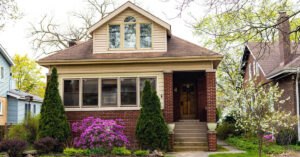If you’re looking for a metric to explain why homeownership is an unaffordable prospect for some U.S. consumers, there may be no better way than to compare the growth of housing costs with the growth of wages.
In the years immediately following the Great Recession, there was a wide chasm between home-price growth and wage growth. From 2012 through 2014, for example, average weekly wages increased 0.3% while median home prices skyrocketed by 17%, according to a RealtyTrac study.
That gap has narrowed recently but still exists. U.S. home prices rose 4.9% year over year in third-quarter 2019, the Federal Housing Finance Agency reported, while average hourly earnings were up 3.2% during the same period, according to the ADP Research Institute.
Additionally, a pair of recent reports from Attom Data Solutions indicate some strong headwinds in this regard for the housing and mortgage industries. In its fourth-quarter 2019 home-affordability report, Attom Data found that annualized home-price appreciation outpaced wage growth in 76% of the 486 counties it analyzed. Although the analysis covered only 15% of U.S. counties, these counties contain about 71% of the nation’s population.
Attom Data’s 2020 rental-affordability report, released this past January, showed that the costs of owning a home continue to outweigh the costs of renting for many Americans. During the first 11 months of last year, home-price growth exceeded rent growth for three-bedroom apartments in 575 of the 855 counties analyzed. On top of that, wages grew more rapidly than rents in 57% of these markets, meaning that conditions are often more favorable for renters than homeowners.
Todd Teta, Attom Data’s chief product and technology officer, says that runaway home prices aren’t to blame for the growth of this affordability gap. “Home prices are still continuing at the pace they had been for most of 2019,” Teta says. “We’re not seeing any significant deceleration of that. What’s not happening, though, is wage growth in most areas.”
The divide may be moderating in some markets, however, as Attom Data reported that 53% of the counties in its home-affordability report were more affordable than their long-term averages, based on data stretching back to 2006. That compared favorably to the 29% share of counties in this category at the end of 2018.
“[It’s] still really poor affordability as a macro trend, but improved, and when we isolate out wages as part of the equation in home prices, there was nothing noticeable there,” Teta says. “Really, what’s driving that improvement is just continued low mortgage rates.”
Michael Neal, senior research associate with the Urban Institute’s housing finance policy center, says the trend of home-price growth outstripping rent growth has been consistent since 2012. He says this implies that “the user cost that’s associated with homeownership is actually rising.” In more recent years, Neal cites two factors for this development — rising interest rates and the lowering of the mortgage interest deduction under the 2017 tax-reform bill.
Indeed, Freddie Mac’s 30-year fixed rate rose from an annual average of 3.65% in 2016 to 4.54% in 2018 before dropping below 4% last year. And combined mortgage debt above $750,000 is no longer tax deductible, compared with the previous limit of $1 million.
“Over 2017 and 2018, we saw mortgage rates rising as the Fed was tightening monetary policy, which for a given loan amount, leads to a higher amount of mortgage interest that you’re paying,” Neal says. “With regard to tax policy, while on the one hand it did lower rates on the individual side in terms of [taxable] income, how it treated the mortgage interest deduction may have also had an effect of raising the user costs associated with homeownership.”
Job growth has been strongest in the services industry, Neal says, and although that includes higher-paying jobs in professional and business services, much of the growth is in lower-paying service jobs. “When you do disentangle it, you do see the compositional aspect of job growth is likely playing a role,” he says. “It is likely curtailing housing demand.”
Cook County, Illinois, is among the most-populated counties where wage growth trails home-price appreciation, according to Attom Data. In Chicago and its adjacent suburbs, the average wage grew 3.8% year over year in the past fourth quarter to $68,562 while the median home price rose 6.3% to $220,000.
In the current environment, organizations like the Illinois Housing Development Authority (IHDA) may be more important than ever in helping to promote affordable-housing opportunities while connecting consumers to mortgages and downpayment assistance (DPA) programs. In fiscal year 2019, IHDA reported helping 5,300 homebuyers access more than $710 million in first mortgages and DPA financing. The average purchase price of an IHDA-financed home was $135,000, compared to a $210,000 price tag for all other homes in Illinois.
“While we fall in that cohort [of home prices growing faster than wages], we still have a lot of affordability and, particularly when you compare us to the coasts, Illinois starts looking particularly attractive,” says Kristin Faust, IHDA’s executive director. “Prices are going up [in Chicago], but they’re not going up as rapidly as they are in other major metropolitan cities. … We actually think that is an opportunity for us. It’s a selling point.”
Faust notes that Illinois — like much of the nation — is dealing with an inventory shortage. IHDA is working to fund construction of new single-family homes in the next few years, she says, and is trying to “prime the market” by reminding homebuilders of the need for midsized homes. Informing mortgage originators and their clients about DPA programs, however, may be the most important task.
“We don’t do a good job of teaching people about homeownership and about how to have good credit, how to have a budget and all that financial education that’s so important in becoming a long-term, sustainable homeowner,” Faust says.





